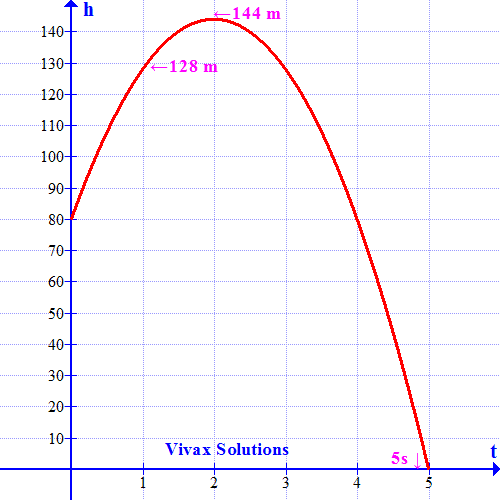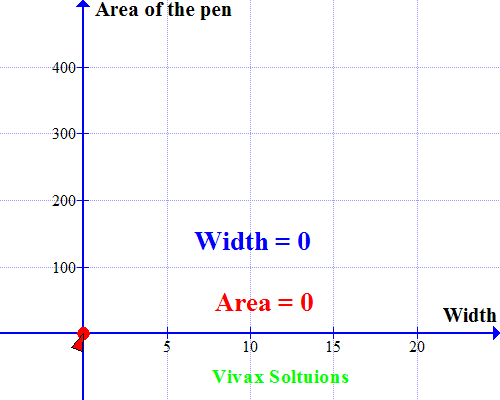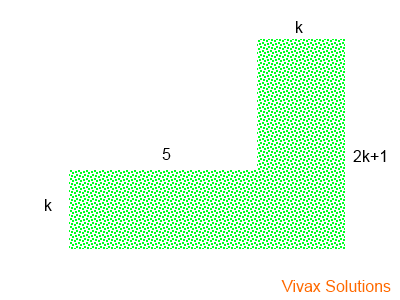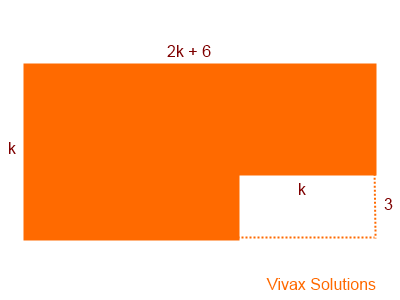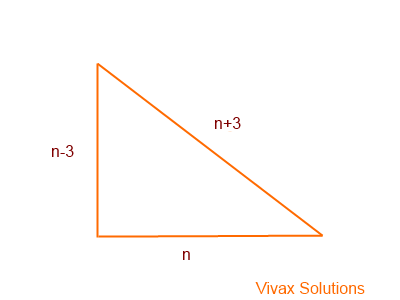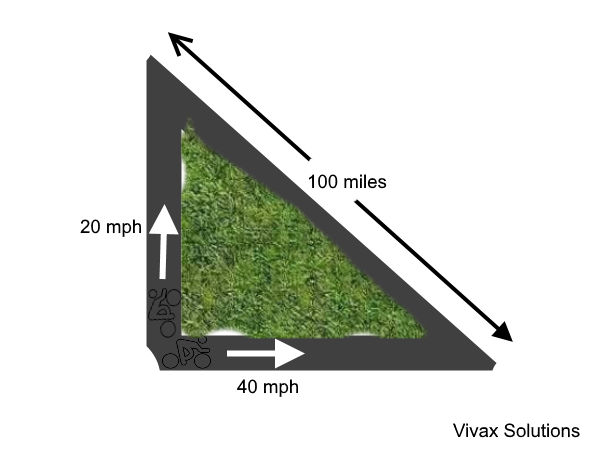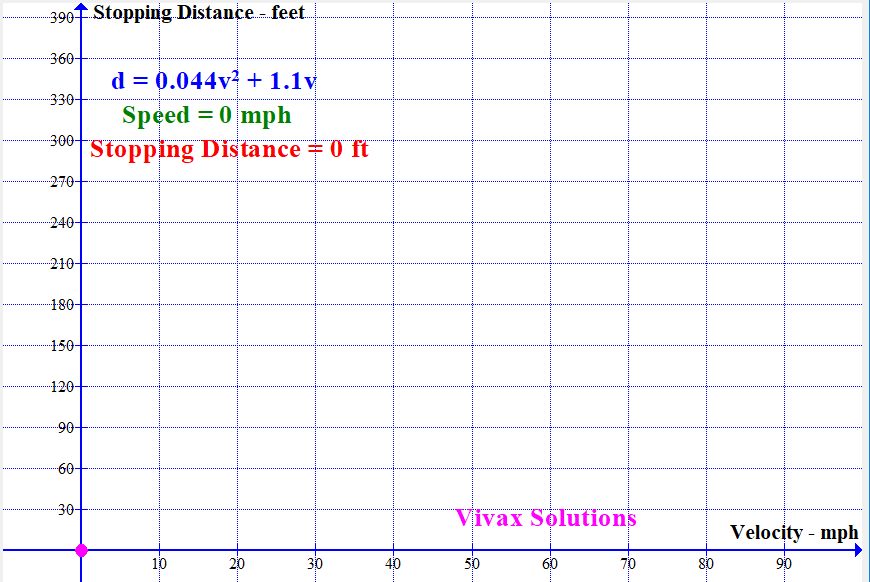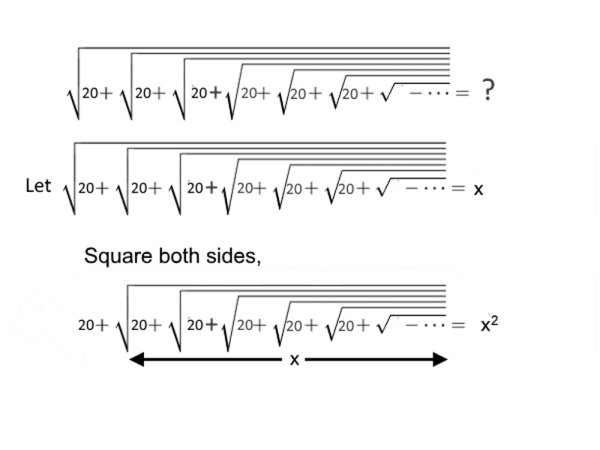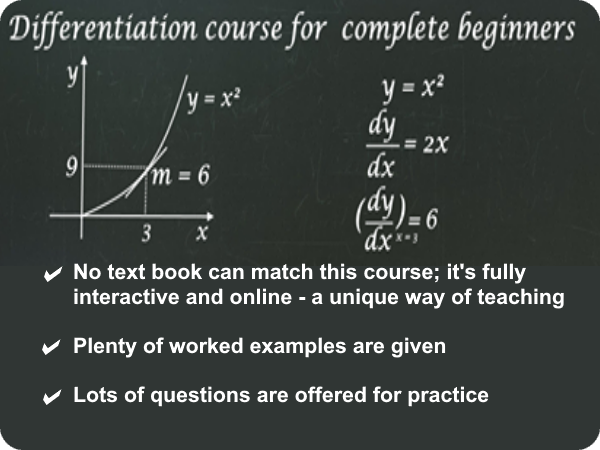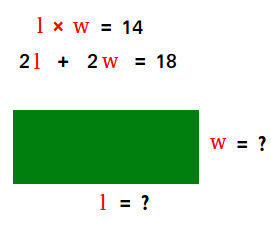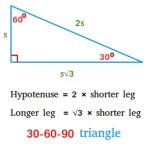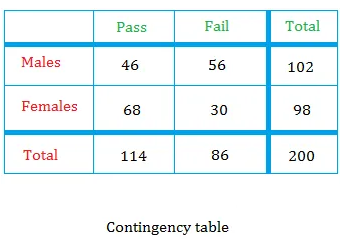Quadratic Equations — word problems with solutions
In this tutorial, you will learn:
- Solving word problems with quadratic equations.
- Interactive practice with randomly generated quadratic equations
- How to build up a quadratic equation from a real life example.
- How to solve the quadratic equation to find the required outcome.
- How each question evolves to give you a perfect understanding in using quadratic equations for real world problems
- Modelling real life situations with quadratic functions — mathematical modelling
- Infinite square root problem
In order to learn how to solve quadratic equations by four different methods, please follow this tutorial; it’s detailed and offers plenty of worked examples and practice questions.
In this tutorial, I assume you have already got a good skill in solving quadratic equations as explained in the above tutorial. This tutorial primarily focuses on solving real-world problems involving quadratic equations.
If you think you need a bit more practice before dealing with word problems, here is a question generator and a programme to check your answers:
The Equation Generator
The following programme is interactive: by clicking on the buttons, you can generate a random equation and its solutions: they are randomly generated — and unlimited in number.
Quadratic Equation Generator
Easy
Hard
The Quadratic Solver
A quadratic equation takes the form of ax2 + bx + c where a and b are two integers, known as coefficients of x2 and x respectively and c, a constant.
Enter a, b and c to find the solutions of the equations.
E.g.
x2 — x — 6 = 0, where a = 1; b=-1; c=-6
Recommended Book
I highly recommend the following textbook for both GCSE(9-1) and IGCSE(9-1).
The book covers every single topic in depth and offers plenty of questions to practise. The questions progress well so that students can get a good conceptual understanding of every major topic. A disciplined practice through this book prepares the students for both examinations fully. There is enough coverage on new additions to the syllabus with a significant amount of questions.
Quadratic Word Problems
E.g.1
The sum of two numbers is 27 and their product is 50. Find the numbers.
Let one number be x. Then the other number is 50/x.
x + 50/x = 27
X => x x2 + 50 = 27x
— 27x => x2 — 27x + 50 = 0
(x -25)(x -2) = 0
(x -25) = 0 or (x -2) = 0
x = 25 or x = 2.
E.g.2
The length of a rectangle is 5 cm more than its width and the area is 50cm2. Find the length, width and the perimeter.
Let the width be x. Then the length = x + 5.
x(x + 5) = 50
x2 + 5x = 50
-50 => x2 + 5x — 50 = 0
(x + 10)(x -5) =0
(x + 10) = 0 or (x -5) =0
x = -10 or x = 5 — x = -10 is impossible to be a width
Width = 5cm; so, the length = 10cm.
Perimeter = 30cm.
E.g.3
The three sides of a right-angled triangle are x, x+1 and 5. Find x and the area, if the longest side is 5.
The hypotenuse = 5
x2 + (x+1)2 = 52 (Pythagoras’ Theorem)
x2 + x2 + 2x + 1 = 25
-25 => x2 + x2 + 2x — 24 = 0
2x2 + 2x — 24 = 0
x2 + x — 12 = 0
(x — 3)(x + 4) = 0
(x + 4) = 0 or (x — 3) = 0
x = -4 or x = 3
x = 3;
Area = 1/2 x 3 x 4 = 6cm2
E.g.4
The product of two numbers is 24 and the mean is 5. Find the numbers.
Let one number = x; then the other = 24/x
(x + 24/x)/2 = 5
X 2 => x + 24/x = 10
X x => x2 + 24 = 10x
— 10x => x2 + -10x + 24 = 0
(x — 6)(x -4) = 0
(x — 6) = 0 or (x -4) = 0
x = 6 or x =4
The numbers are 6 or 4.
E.g.5
The sum of numbers is 9. The squares of the numbers is 41. Find the numbers.
These are quadratic simultaneous equations.
let the numbers be x and y.
x + y = 9
x2 + y2 = 41
From the first equation, y = (9-x)
Now substitute this in the second equation.
x2 + (9-x)2 = 41
x2 + 81 — 18x + x2 = 41
2x2 — 16x + 81 = 41
2x2 — 16x + 40 = 0
x2 — 8x + 20 = 0
(x — 5)(x -4) =0
(x — 5) = 0 or (x -4) =0
x = 5 or x = 4
Substitute in the first equation, y = 5 or 4
The numbers are 5 and 4.
Mathematical Modelling with Quadratic Functions
There are quite a few real life situations that can be modelled by a quadratic function in an accurate way. For instance, the motion of a ball, thrown upwards to move under gravity, can be easily modelled by a quadratic equation. Using the model, we can calculate the height of the ball if the time is known or vice versa.
E.g.6
A ball is thrown upwards from a rooftop, 80m above the ground. It will reach a maximum vertical height and then fall back to the ground. The height of the ball from the ground at time t is h, which is given by,
h = -16t2 + 64t + 80.
- What is the height reached by the ball after 1 second?
- What is the maximum height reached by the ball?
- How long will it take before hitting the ground?
Follow the graph along with the calculation for a better understanding:
1) h = -16t2 + 64t + 80
h = -16* 1*1 + 64*1 + 80 = 128m
2) Rearrange by the completing the square, we get:
h = -16[t2 — 4t — 5]
h = -16[(t — 2)2 — 9]
h = -16(t — 2)2 + 144
When the height is maximum, t = 2; therefore, maximum height = 144m.
3) When the ball hits the ground, h = 0;
-16t2 + 64t + 80 = 0
Divide the equation by -16
t2 — 4t — 5 = 0
(t — 5)(t + 1) = 0
t = 5 or t = -1
The time cannot be negative; so, the time = 5 seconds.
E.g.7
A farmer wants to make a rectangular pen for his sheep. He has 60m fencing material to cover three sides with the other side being a brick wall. How should he use the fencing material to maximize the space for his sheep? How should he choose length and width of the pen to achieve his objective?
He just has to cover three sides; let the width be x.
Then the length = (60-2x)
Area of the pen = x(60-2x)
= 60x -2x2
Now let’s sketch a graph for the quadratic equation. Which is as follows:
As you can see, the curve peaks at x = 15; when the width = 15m, the area is maximum. A very useful way to use quadratic equations in real life, indeed!
Amazon Ad: Phone Stand: it's Amazon's Choice
E.g.8
Two resistors, when connected in series, have a total resistance of 25 Ohms. If they are connected in parallel, the value goes down to 6 Ohms. Find the values.
When they are in series, if one resistor is x, then the other is 25-x
When they are in parallel, 1/6 = 1/x + 1/(25-x)
1/6 = 25/[x(25-x)] = 25/[25x — x2]
25x — x2 = 150
If ax2 + bx + c = 0, then
x = [-b ±√(b2 — 4ac) ]/ 2a
x2 — 25x + 150 = 0
a = 1; b = -25; c = 150
x = -(-25) ±√((-25)2 — 4(1)(150)) / 2(1)
x = 25 ±√(625 — 600) / 2
x = 25 ±√(25) / 2
x = (25 ± 5 )/ 2
x = 15 or x = 10
So, the resistors are 15 Ohms or 10 Ohms.
E.g.9
The following picture shows the shape of a certain grass patch. If the area of the patch is 80m2, find k.
The total area = 5k + k(2k+1)
= 5k + 2k2 + k
= 2k2 + 6k
Since the area is 80m2
2k2 + 6k = 80
2k2 + 6k — 80 = 0
(2k — 10)(k + 
k = 5 or k = -8
Since the length cannot be negative, k = 5.
E.g.10
The following picture shows the shape of a rectangle from which a smaller rectangular part is removed. If the remaining area of the larger rectangle is 35cm2, find k.
The remaining area = k(2k+6) — 3k
= 2k2 + 6k -3k
= 2k2 + 3k
Since the area is 35cm2
2k2 + 3k = 35
2k2 + 3k — 35 = 0
(2k -7)(k + 5) = 0
k = 3.5 or k = -5
Since the length cannot be negative, k = 3.5.
E.g.11
The shortest side of a right-angled triangle is 6cm shorter than its hypotenuse. The difference in length of other two sides is 3cm. If the shortest side is n-3, show that 2n2 = 12n. Hence, find n.
If the length of the shortest side is n-3, the length of the hypotenuse and the other side are n+3 and n respectively.
So, using Pythagoras Theorem,
(n-3)2 + n2 = (n+3)2
n2 — 6n + 9 + n2 = n2 + 6n + 9
n2 = 12n
n2 — 12n = 0
n(n — 12) = 0
n = 0 or n = 12.
Since the length cannot be zero, n = 12.
E.g.12
Two cyclists move away from a town along two perpendicular paths at 20 mph and 40 mph respectively. The second cyclist starts the journey an hour later than the first one. Find the time taken for them to be 100 miles apart.
Suppose the time taken by the first cyclist is t; then the time taken by the other cyclist = (t-1)
The distances travelled by them are 20t and 40(t-1) respectively.
Using Pythagoras Theorem,
(20t)2 + [40(t-1)]2 = 1002
400t2 + 1600(t-1)2 = 10000
t2 + 4t2 — 8t + 4 = 25
5t2 — 8t -21 = 0
(5t + 7)(t -3) = 0
t = 3 or t = -1.4
Since time cannot be negative, t = 3hrs.
Modelling Stopping Distance of a Vehicle with Speed
With the available data, the stopping distance — sum of thinking distance and breaking distance — can be modelled by a quadratic function. It is as follows:
| Stopping Distance | |
| Thinking Distance | Breaking Distance |
If the stopping distance = d and the speed = v,
d = 0.044v2 + 1.1v
The following animation shows how the stopping distance, modelled by the above equation, changes with the speed:
Infinite Square Root Problem
Solve the following infinite square root problem:
20 + x = x2
x2 — x — 20 = 0
x = (1 ± √1 + 80)/2
x = (1 ± √81)/2
x = (1 ± 9)/2
x = 5 or x = -4
Since the square root of a negative number cannot be found, x = 5. So, the value of the above infinite square problem is 5.
Recommended Book
This is a book designed for IGCSE, the international GCSE examination in the UK and the Commonwealth countries — in the age group 14 — 16. The questions, however, are superb for anyone who want to master mathematical concepts in this age group, regardless of the examinations that they sit for.
The book contains lots of exercises, graded progressively from simple to harder, covering almost all the topics. If they are practised in the order given, the confidence of the students are naturally boosted to such an extent the need for any more resources becomes non-existent.
There are two books in this series — book one and book two. I strongly recommend both for students. Please click the image, which will take you to Amazon book store.
🏆 Challenging Questions
1) Solve the following equation and find all the possible values of x:
(x² — x — 5)x² — 2x — 3 = 1
2) Show that x2 -2xy + 2y2 can never be a negative.
Ad: The author of this site offers fully interactive tutorial on differentiation
Now, in order to complement what you have just learnt, work out the following questions:
Questions
- The sum of squares of two consecutive even numbers is 244. Find the numbers.
- The base length of a triangle is 2cm more than its height. The area is 24cm2. Find the length of hypotenuse and the
perimeter of the triangle. - The length of a square is increased by a 5th so that its new area is 44cm2 more than the original value. Find the difference in perimeter of two shapes.
- The length and width of a rectangular garden are 150m and 120m. A foot path of regular width is added to the boundary of the garden and the total area of the garden
becomes 2800m2 more than its original area. Find the width of the footpath. - Adam is about to embark on a journey on a narrow country lane that covers 32km and decides to go at x km/h. On second thoughts, he calculates that if he increases the speed by 4km/h, his journey time can be cut down by 4 hrs. Find x.
- The reciprocal of the sum of reciprocals of two numbers is 6. The sum of numbers is 25. Find the numbers.
- The speed of an ant is (2t + 10) and after travelling for t minutes, it covers a distance of 12m. Find t.
- Two chords and a diameter form a triangle inside a circle. The radius is 5cm and one chord is 2cm longer than the other one. Find the perimeter and the area of the
triangle. - The sum of a number and it reciprocal is 26/5. Find the number.
- The product of two numbers is 20. The sum of squares is 41. Find the numbers.
- The dimensions of the glass plate of a wedding photo are 18cm and 12cm respectively. A new rectangular frame of equal width all, the way round the photo, is about to be fitted around the it so that the area of the frame is the same as that of the glass. Find the width of the frame.
- A group of acquaints went to a restaurants for a meal. When the bill for £175 was brought by a waiter, two of the cheeky ones from the group just sneaked off before the bill was paid, which resulted in the payment of extra £10 by each remaining individual. How many were in the group at first?
- Ashwin and Donald decided to set out from two towns on their bikes, which are 247 miles apart, connected by a straight
t Roman road in England. When they finally met up somewhere between the two towns, Ashwin had been cycling for 9 miles a day. The number of days for the whole adventure is 3 more than the number of miles that Donald had been cycling in a day. How many miles did each cycle? - When a two-digit number is divided by the product of the two digits, the answer is 2 and if 27 is added to the number, the original number turns into a new number with the digits being swapped around. Find the number.
- There are three numbers: the difference of the differences of them is 5. The sum and product are 44 and 1950 respectively. Find the numbers.
- Find the two numbers, whose sum is 19 and the product of the difference and the greater, is 60.
- A boy was asked his age: «If you add the square root of it to half of it, and then subtract 12, the answer will be nothing,» replied the boy. What was his age?
- A group of army cadets, consisting of 1066 men, form two squares in front of a garrison. In the side of one square, there are 4 more men than the other. How many men are in each side of the squares?
- The height of a triangle is 4cm less than three times its base length. If the area is 80 cm2, find the lengths of the base and height.
- An isosceles triangle is inscribed in a circle in such a way that its longest side, which goes through the centre is √50cm. Find the area of the triangle.
- A butcher bought some pheasants for £100.00. Had each cost £1 less, he would have bought 5 more. How many pheasants did he buy?
- The sum of reciprocals of two consecutive integers is 13/42. Find the integers.
- The product of two numbers and the difference between them are 289 and 20 respectively. Find the numbers.
- The sum of two numbers is 20. The sum of squares is 250. Find the numbers.
- The area of a square exceeds twice that of another by 56cm2. If the difference of the perimeter between the two is 24cm, find the area of the smaller square.
Answers
Move the mouse over, just below this, to see the answers:
- 10, 12
- 10cm, 24cm
- 8cm
- 5m
- 4km/h
- 10, 15
- 1
- 24cm, 24cm2
- 5
- 5 and 4
- 3cm
- 7
- 117 and 130 miles
- 36
- 6, 13, 25
- 12,7
- 16
- 21 and 25
- 8cm, 20cm
- 12.5cm2
- 20
- 6, 7
- 27, 7
- 15, 5
- 100 or 4
Do you need detailed solutions to the above questions? Please click the following and I will send the answers:
Detailed Solutions
for the above
Quadratic Questions
As a PDF
for Just £3.99
Now that you have read this tutorial, you will find the following tutorials very helpful too:
- Solving Quadratic Equations — interactive
- Transformations of Graphs — interactive
- Solving Simultaneous Equations
- Simultaneous Equations — word problems
- Iteration — interactive
- Factorisation
- Functions
Unique Visitors:
Quadratic equations word problems are math problems in which the equations are not given directly. These problems can be solved by using the given information to obtain a quadratic equation of the form $latex ax^2+bx+c$. We can then use the factoring method, the completing the square method or the quadratic formula to solve the equation.
Here, we will look at 10 quadratic equations word problems with answers. In addition, you will also be able to practice with 5 word problems to solve.
ALGEBRA
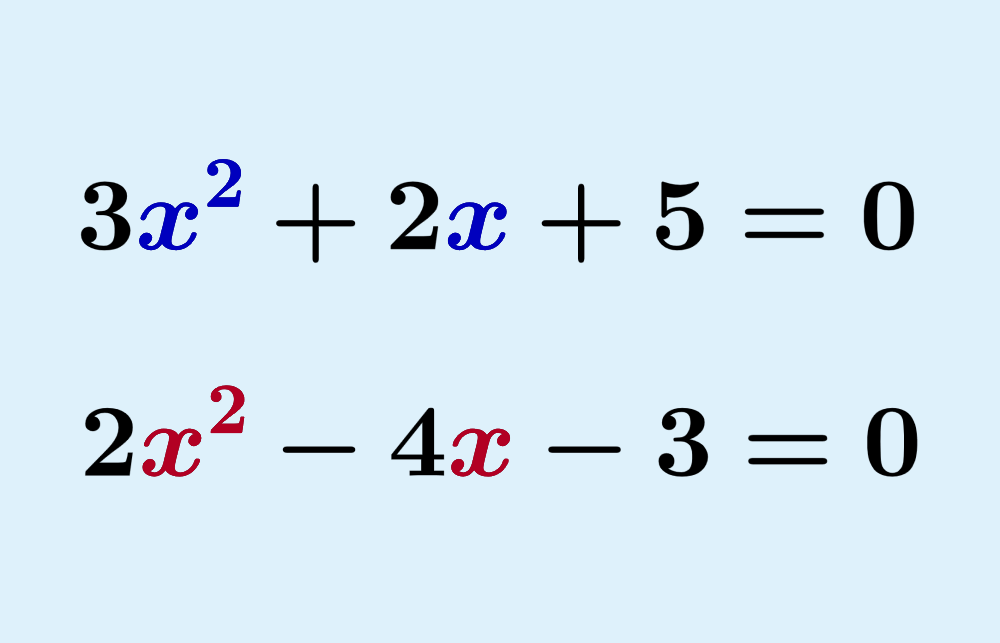
Relevant for…
Learning to solve word problems of quadratic equations.
See problems
ALGEBRA

Relevant for…
Learning to solve word problems of quadratic equations.
See problems
The following problems are solved by forming a quadratic equation with the given word problem. Try to solve the problems yourself before looking at the solution.
PROBLEM 1
If the sum of two numbers is equal to 17 and their product is equal to 60, what are the numbers?
Solution
We can use the letters X (smaller number) and Y (larger number) to represent both numbers. Then, from the statement, we can obtain the following equations:
$latex X+Y=17~~[1]$
$latex XY=60~~[2]$
Now, we can rearrange equation 1 to get $latex Y=17-X$. Substituting this expression into the second equation, we have:
$latex X(17-X)=60$
Expanding the parentheses and rearranging the equation, we have:
$latex 17X-X^2=60$
$latex X^2-17X+60=0$
Now, we can factor the equation to solve:
$latex X^2-17X+60=0$
$latex (X-12)(X-5)=0$
$latex X-12=0~~$ or $latex ~~X-5=0$
$latex X=12~~$ or $latex ~~X=5$
Therefore, we have:
- If $latex X=5$, we have $latex Y=17-5=12$. This solution is correct because X<Y.
- If $latex X=12$, we have $latex Y=17-12=5$
The numbers are 12 and 5.
PROBLEM 2
The difference between two numbers is equal to 5 and their product is equal to 126. What are these numbers?
Solution
Using the information in the statement and using the letters X (smaller number) and Y (larger number) to represent the numbers, we can obtain the following equations:
$latex Y-X=5 ~~[1]$
$latex XY=126~~[2]$
Now, we can write the first equation as $latex Y=5+X$ and substituting it into the second equation, we have:
$latex X(5+X)=126$
$latex 5X+X^2=126$
$latex X^2+5X-126=0$
Now, we can factor and solve:
$latex (X+13)(X-9)=0$
$latex X+13=0~~$ or $latex ~~X-9=0$
$latex X=-13~~$ or $latex ~~X=9$
Therefore, we have:
- If $latex X=-13$, we have $latex Y=5-13=-8$
- If $latex X=9$, we have $latex Y=5+9=14$. This solution is correct because $latex XY=126$
The numbers are 12 and 5.
PROBLEM 3
If the area of a rectangle is 78 square units and its longest side is 7 units longer than its shortest side, what are the lengths of the sides?
Solution
We can represent the shorter side with x. This means that the longest side is equal to x+7.
Also, we remember that the area of a rectangle is equal to the product of its sides. Therefore, we can form the following equation:
$latex x(x+7)=78$
Expanding and writing the equation in the form $late ax^2+bx+c=0$, we have:
$latex x^2+7x-78=0$
Now, we can use factorization to solve:
$latex (x+13)(x-6)=0$
$latex x+13=0~~$ or $latex ~~x-6=0$
$latex x=-13~~$ or $latex ~~x=6$
Since we can’t have negative lengths, we have $latex x=6$, so the lengths are 6 and 13.
PROBLEM 4
Find the lengths of the sides of a rectangle that has an area of 200 square units if the longer side is twice the length of the shorter side.
Solution
Using the letters X (short side) and Y (long side) to represent the sides, we can obtain the following equations using the given information:
$latex Y=2X~~[1]$
$latex XY=200~~[2]$
Now, we can substitute equation 1 into equation 2 and we have:
$latex X(2X)=200$
$latex 2X^2=200$
To solve this equation, we have to isolate X² completely and take the square root of both sides:
$latex X^2=100$
$latex X=pmsqrt{100}$
$latex X=pm 10$
Since a length can’t be negative, we have $latex X=10$. Therefore, we have $latex Y=20$.
PROBLEM 5
The difference between the squares of two consecutive odd numbers is equal to 48. Find both numbers.
Solution
Representing the first number with x, we can deduce that a consecutive odd number is equal to $latex x+2$. Therefore, using the information in the statement, we form an equation with the squares of the consecutive numbers:
$latex (x+2)^2-x^2=48$
Expanding, simplifying and solving, we have:
$latex x^2+4x+4-x^2=48$
$latex 4x+4=48$
$latex 4x=44$
$latex x=11$
The consecutive odd numbers are 11 and 13.
PROBLEM 6
The sides of a right triangle have lengths x, x+2, and 10. If 10 is the hypotenuse of the triangle, find the value of x.
Solution
Since the triangle is a right triangle, we can use the Pythagorean theorem to find an equation for the lengths of the three sides of the triangle.
The statement tells us that 10 is the hypotenuse of the triangle. Therefore, we have:
$latex x^2+(x+2)^2=10^2$
Expanding and simplifying the equation, we have:
$latex x^2+(x+2)^2=10^2$
$latex x^2+x^2+4x+4=100$
$latex 2x^2+4x+4=100$
$latex 2x^2+4x-96=0$
Now, we can divide the entire equation by 2 to simplify it:
$latex x^2+2x-48=0$
Solving by factorization, we have:
$latex (x+8)(x-6)=0$
$latex x+8=0~~$ or $latex ~~x-6=0$
$latex x=-8~~$ or $latex ~~x=6$
Since we can’t have a negative length, the answer is $latex x=6$.
PROBLEM 7
If the product of two numbers is equal to 48 and their average is equal to 7, find both numbers.
Solution
We can represent one of the numbers with x. This means that the other number is equal to 48/x since their product is equal to 48.
Therefore, considering that the average of two numbers is equal to the sum of the numbers divided by 2, we have:
$latex frac{x+48/x}{2}=7$
Simplifying, we have:
$latex x+frac{48}{x}=14$
$latex x^2+48=14x$
$latex x^2-14x+48=0$
Now, we can solve by factorization:
$latex (x-8)(x-6)=0$
$latex x-8=0~~$ or $latex ~~x-6=0$
$latex x=8~~$ or $latex ~~x=6$
The numbers are 6 and 8.
PROBLEM 8
If the side length of a square is increased by 4, its area is multiplied by 9. Find the side length of the original square.
Solution
In this problem, there are two areas that we need to consider, the area of the original square and the area of the larger square (length +4).
Using the x to represent the sides of the original square and remembering that the area of a square is equal to the length of one of the sides squared, we have:
Larger area = 9 × Original area
$latex (x+4)^2=9x^2$
Expanding and simplifying, we have:
$latex x^2+8x+16=9x^2$
$latex 8x^2-8x-16=0$
We can divide the entire equation by 8 and solving by factoring, we have:
$latex x^2-x-2=0$
$latex (x-2)(x+1)=0$
$latex x-2=0~~$ or $latex ~~x+1=0$
$latex x=2~~$ or $latex ~~x=-1$
Since a length cannot be negative, the answer is $latex x=2$.
PROBLEM 9
The shortest side of a right triangle is 4 units less than its hypotenuse. The difference between the short side and the intermediate side is 2 units. If the shorter side is x-2, find the value of x.
Solution
From the statement, we can deduce the following lengths of the triangle:
- Short side = x-2
- Intermediate side = x (2 units difference with short side)
- Hypotenuse = x+2 (4 units more than short side)
Now, we can use the Pythagorean theorem to write an equation for the three lengths:
$latex (x-2)^2+x^2=(x+2)^2$
Expanding and simplifying, we have:
$$x^2-4x+4+x^2=x^2+4x+4$$
$$x^2-4x+4+x^2-x^2-4x-4=0$$
$latex x^2-8x=0$
$latex x(x-8)=0$
$latex x=0~~$ or $latex ~~x=8$
Since the length cannot be 0, we have $latex x=8$.
PROBLEM 10
The figure below has an area of 100 square units. Find the value of x.
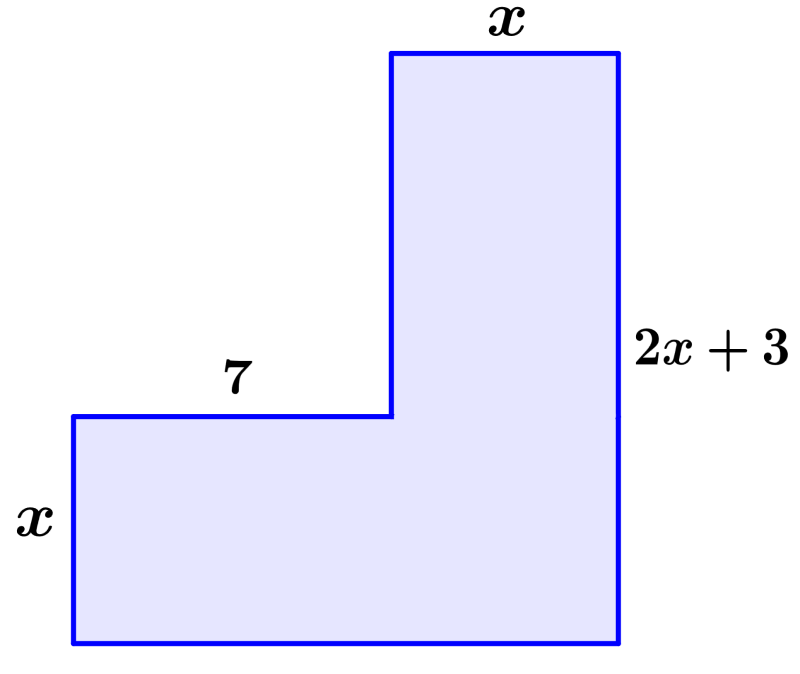
Solution
We can divide the figure into two rectangles, one rectangle has the area 7x and the other rectangle has the area x(2x+3). Adding these areas, we have:
$latex 7x+x(2x+3)=100$
Expanding and simplifying, we have:
$latex 7x+2x^2+3x=100$
$latex 2x^2+10x-100=0$
Now, we can divide the entire equation by 2 and solve by factoring:
$latex x^2+5x-50=0$
$latex (x+10)(x-5)=0$
$latex x=-10~~$ or $latex ~~x=5$
Since we can’t have a negative length, the answer is $latex x=5$.
Quadratic equations word problems to solve
Solve the following problems using any method of solving quadratic equations.
Find two numbers such that their sum equals 18 and their product equals 56.
Choose an answer
2 and 17
7 and 8
4 and 14
3 and 12
Find the length of the sides of a rectangle that has an area of 84 square units if the length of one side is 5 units longer than the other side.
Choose an answer
5 and 10
8 and 13
6 and 11
7 and 12
The three sides of a right triangle are x, x+1, and 5. If the hypotenuse equals 5, what is the value of x?
Choose an answer
-4
2
3
4
The difference of the squares of two consecutive even numbers is 68. Find the two numbers.
Choose an answer
14 and 16
16 and 18
18 and 20
20 and 22
If the length of the sides of a square is increased by 6, its area is multiplied by 16. Find the length of one of the sides of the original square.
Choose an answer
-2.4
2.4
3
4
See also
Interested in learning more about quadratic equations? Take a look at these pages:
- Quadratic Equations Calculator
- Solving Quadratic Equations – Methods and Examples
- How to Solve Quadratic Equations? Step-by-Step
- 20 Quadratic Equation Examples with Answers
Jefferson Huera Guzman
Jefferson is the lead author and administrator of Neurochispas.com. The interactive Mathematics and Physics content that I have created has helped many students.

Learn mathematics with our additional resources in different topics
LEARN MORE

Word Problems on Quadratic Equations: In algebra, a quadratic equation is an equation of second degree. If a quadratic polynomial is equated to zero, then we can call it a quadratic equation. The ancient mathematician Sridharacharya derived a formula known as a quadratic formula for solving a quadratic equation by completing the square.
Quadratic equations arise in many situations in the world around us and in the various field of mathematics. There are always two solutions to a quadratic equation. There are multiple methods to solve quadratic equations. In this article let us look at some of the different ways of solving Quadratic Equations Problems using sridharacharya method and more.
Definition of Quadratic Equation
An equation of second-degree polynomial in one variable, such as (x) usually equated to zero, is called a quadratic equation. The coefficient of (x^{2}) must not be zero in a quadratic equation. If (p(x)) is a quadratic polynomial, then (p(x)=0) is called a quadratic equation.
Some examples are, (3 x^{2}+2 x+2=0,-x^{2}+6 x+1=0,7 x^{2}-6 x+4=0)
Standard Form of a Quadratic Equation
The standard form of a quadratic equation is given by (a x^{2}+b x+c=0), where (a, b, c) are real numbers, (a neq 0) and (a) is the coefficient of (x^{2}, b) is the coefficient of (x), and (c) is a constant.
Quadratic Equation Word Problems
Quadratic equations deal with many real-life situations.
For example, suppose a builder decides to build a community hall of a building having a carpet area of (1000,{text{square}},{text{meter}}) with its length two meters more than twice its breadth. What should be the length and breadth of the hall?
In such cases, we take the help of quadratic equations to solve and obtain the measures.
Suppose the breadth of the hall is (x,{text{meters}}). Then, its length will be ((2 x+2)) ({text{meters}}).
Therefore, the area of the hall ( = {text{length}} times {text{breadth}} = x times (2x + 2) = 1000 Rightarrow 2{x^2} + 2x = 1000)
(Rightarrow 2 x^{2}+2 x-1000=0)
Now, this is a quadratic equation.
We can solve any word problems on a quadratic equation using various methods. Let us know about these.
Solving Quadratic Equation Sums Using Factorisation Method
If we can factorize (a x^{2}+b x+c, a neq 0), into a product of two linear factors, then the roots of the quadratic equation (a x^{2}+b x+c=0) can be found by equating each factor to zero.
Let us take an example of a word problem.
Example: The product of two consecutive even integers is equal to (24). Find these integers.
Let the two integers be (x, x+2).
Now, according to the statement, (x(x+2)=24 Rightarrow x^{2}+2 x-24=0)
- Compare the given quadratic equation with the standard form (a x^{2}+b x+c=0) and find the coefficients of (x^{2}, x), and the constant to get the values for (a, b, c). So, comparing (x^{2}+2 x-24=0) with (a x^{2}+b x+c=0) we get, (a=1, b=2, c=24)
- Now we will split (b) as the sum of two numbers such that the product of these two numbers (=a times c=a c)
We can factorize a quadratic equation when (b) can be split in (v) and (w) or (b=v+w) and (v, w) are the factors of (a times c=a c).
So, (x^{2}-(6-4) x-24=0)
(Rightarrow x^{2}-6 x+4 x-24=0) - Find the common factor of the first two and last two terms individually, such as the new two terms have the same common factor.
So, (x) is the common factor of the first two terms (x^{2}-6 x). Therefore, (x(x-6)). (4) is the common factor of the last two terms (4 x-24).
Therefore, (4(x-6)).
So, (x(x-6)-4(x-6)=0) - If we take out the same common factor, then we get the product of two linear polynomials.
Now, ((x-6)) is the common factor in the new two terms.
So, ((x-6)(x-4)=0) - At last, we will apply the zero product rule to find the solutions. Zero product property says that when (p times q=0), then (p=0) or (q=0).
Therefore, ((x-6)=0), or ((x-4)=0)
Hence, the solutions are (x=6, x=4).
Solving Quadratic Equations Problems Using Completing Square Method
A quadratic equation can be solved by the method of completing the square. Following are the steps to Solve Quadratic Equation Using Completing the Square Method:
(a x^{2}+b x+c=0, a neq 0)
Let us divide (a) from the LHS.
(Rightarrow x^{2}+frac{b}{a} x+frac{c}{a}=0 Rightarrow x^{2}+2 times frac{b}{2 a} times x+frac{c}{a}=0)
Now, to make the perfect square, we need to add and subtract (left(frac{b}{2 a}right)^{2}) from LHS
(Rightarrow x^{2}+2 times frac{b}{2 a} times x+left(frac{b}{2 a}right)^{2}-left(frac{b}{2 a}right)^{2}+frac{c}{a}=0 Rightarrowleft(x+frac{b}{2 a}right)^{2}-left(frac{b}{2 a}right)^{2}+frac{c}{a}=0)
Transferring (-left(frac{b}{2 a}right)^{2}+frac{c}{a}) from LHS to RHS we have,
(Rightarrowleft(x+frac{b}{2 a}right)^{2}=-frac{c}{a}+left(frac{b}{2 a}right)^{2})
Taking square root on both sides we have,
(Rightarrow x+frac{b}{2 a}=pm sqrt{-frac{c}{a}+left(frac{b}{2 a}right)^{2}})
(Rightarrow x=pm sqrt{-frac{c}{a}+left(frac{b}{2 a}right)^{2}}-frac{b}{2 a})
Example: A motorboat whose speed is (18,{text{kmph}}) in still water takes (1,{text{hour}}) more to go (24 mathrm{~km}) upstream than to return downstream to the exact location. Find the speed of the stream.
Let the speed of the stream be (x,{text{kmph}}).
We know that when the boat travels upstream, the relative speed between the boat and the stream (=(18-x),{text{kmph}})
When the boat travels downstream, the relative speed between the boat and the stream (=(18+x),{text{kmph}})
The time required to go upstream (=frac{text { Distance }}{text { Speed }}=frac{24}{18-x}) ({text{hours}})
Similarly, the time required to go downstream (=frac{text { Distance }}{text { Speed }}=frac{24}{18+x}) ({text{hours}})
Now, according to the question, (frac{24}{18-x}-frac{24}{18+x}=1 Rightarrow 24left[frac{1}{18-x}-frac{1}{18+x}right]=1 Rightarrowleft[frac{1}{18-x}-frac{1}{18+x}right]=frac{1}{24})
To solve the for (x) we need to convert the above equation into the standard form of the quadratic equation.
(Rightarrowleft[frac{(18+x)-(18-x)}{(18-x)(18+x)}right]=frac{1}{24} Rightarrowleft[frac{18+x-18+x}{(18-x)(18+x)}right]=frac{1}{24})
(Rightarrowleft[frac{2 x}{18^{2}-x^{2}}right]=frac{1}{24}) (using the algebraic identity (a^{2}-b^{2}=(a+b)(a-b))
Now, cross multiplying we have, (Rightarrow 48 x=324-x^{2})
(Rightarrow x^{2}+48 x-324=0 Rightarrow x^{2}+2 times 24 times x-324=0)
Now, to make the perfect square, we need to add and subtract ((24)^{2}) from LHS
(Rightarrow x^{2}+2 times 24 times x+(24)^{2}-(24)^{2}-324=0 Rightarrow(x+24)^{2}-(24)^{2}-324=0)
Transferring (-(24)^{2}-324) from LHS to RHS we have,
(Rightarrow(x+24)^{2}=+324+(24)^{2})
Taking square root on both sides we have,
(Rightarrow x+24=pm sqrt{900})
(Rightarrow x=pm 30-24)
(Rightarrow x=+30-24)
(Rightarrow x=-30-24=-54)
We will consider the positive value of (x) as speed can not be negative.
Hence, the speed of the stream is (6,{text{kmph}}).
Solving Quadratic Equations Problems Using Sridharacharya Method
The roots of the quadratic equation (a x^{2}+b x+c=0) are given by the quadratic formula
(x=frac{-b pm sqrt{b^{2}-4 a c}}{2 a})
Example: Madhu and Rimi have (45) marbles. Both of them lost (5) marbles each, and the product of the marbles they have now is (124). Find out how many marbles they had in the beginning?
Let us assume the number of marble Madhu had is (x) and the number of marbles Rimi had is ((45-x)).
The number of marbles Madhu had when she lost (5) marbles (=x-5)
The number of marbles Rimi had when she lost (5) marbles (=45-x-5=40-x)
According to the statement
(left({x – 5} right)left({40 – x} right) = 124 Rightarrow – {x^2} + 40x + 5x – 200 = 0)
( Rightarrow – {x^2} + 45x – 200 – 124 = 0 Rightarrow {x^2} – 45x + 324 = 0)
From the given quadratic equation (a=1, b=-45, c=324). So, by the quadratic formula
(x=frac{-b pm sqrt{b^{2}-4 a c}}{2 a})
(=frac{-(-45) pm sqrt{(-45)^{2}-4 times 1 times 324}}{2 times 1}=frac{+45 pm sqrt{2025-1296}}{2})
(=frac{45 pm sqrt{729}}{2}=frac{45 pm 27}{2}=frac{45+27}{2}, frac{45-27}{2}=36,9)
(Rightarrow x=36) or (x=9)
Hence, they had started with (36) and (9) marbles.
If Madhu had (36) marbles, then Rimi had (9) marbles, and if Madhu had (9) marbles, then Rimi had (36) marbles.
Solved Examples – Problems on Quadratic Equations for Class 10
Q.1. A boat has a speed of (16 mathrm{~km} / mathrm{hr}) in still water. In a particular river, it takes (2) hours more to go (32 mathrm{~km}) upstream than to return to the same point. What is the speed at which water is flowing in the river?
Ans: Let the speed of the stream be (x,{text{kmph}}).
We know that when the boat travels upstream, the relative speed between the boat and the stream ((16-x),{text{kmph}})
When the boat travels downstream, the relative speed between the boat and the stream ((16+x),{text{kmph}})
The time required to go upstream (=frac{text { Distance }}{text { Speed }}=frac{32}{16-x}) ({text{hours}})
Similarly, the time required to go downstream (=frac{text { Distance }}{text { Speed }}=frac{32}{16+x}) ({text{hours}})
Now, according to the question,
(frac{32}{16-x}-frac{32}{16+x}=2 Rightarrow 32left[frac{1}{16-x}-frac{1}{16+x}right]=2 Rightarrowleft[frac{1}{16-x}-frac{1}{16+x}right]=frac{2}{32})
To solve the for (x) we need to convert the above equation into the standard form of the quadratic equation.
(Rightarrowleft[frac{(16+x)-(16-x)}{(16-x)(16+x)}right]=frac{1}{16} Rightarrowleft[frac{16+x-16+x}{(16-x)(16+x)}right]=frac{1}{16})
(Rightarrowleft[frac{2 x}{16^{2}-x^{2}}right]=frac{1}{16}) (using the algebraic identity (a^{2}-b^{2}=(a+b)(a-b))
Now, cross multiplying we have, (Rightarrow 32 x=256-x^{2})
We have (Rightarrow x^{2}+32 x-256=0)
(Rightarrow x^{2}+2 times 16 times x-256=0)
Now, to make the perfect square, we need to add and subtract ((16)^{2}) from LHS (Rightarrow x^{2}+2 times 16 times x+(16)^{2}-(16)^{2}-256=0 Rightarrow(x+16)^{2}-(16)^{2}-256=0)
Transferring (-(16)^{2}-256) from LHS to RHS we have,
(Rightarrow(x+16)^{2}=512)
Taking square root on both sides we have, (Rightarrow x+16=pm sqrt{512})
(Rightarrow x=pm 16 sqrt{2}-16)
(Rightarrow x=+16 sqrt{2}-16) or, (x=-16 sqrt{2}-16)
We will consider the positive value of (x) as speed can not be negative. Hence, the speed at which the water is flowing in the river is ( + 16sqrt 2 – 16,{text{kmph}})
Q.2. Priya decides to build a prayer hall of her house having a carpet area of (300,{text{square}},{text{meters}}) with its length of (25,{text{meters}}) more than its breadth. What should be the breadth and length of the prayer hall?
Ans: Let us assume breadth is (x), and the length is ((x+25)). According to the question,
(x(x+25)=300 Rightarrow x^{2}+25 x-300=0)
(Rightarrow) From the given quadratic equation (a=1, b=25, c=-300)
Quadratic equation formula is given by (x=frac{-b pm sqrt{b^{2}-4 a c}}{2 a})
(x=frac{-(25) pm sqrt{(25)^{2}-4 times 1 times(-300)}}{2 times 1}=frac{-25 pm sqrt{1825}}{2})
(x=frac{-25+sqrt{1825}}{2}=8.86) (approx) or (x=frac{-25-sqrt{1825}}{2}=-33.86) (approx) We will avoid the negative value of (x) as breadth can not be negative.
Hence, the breadth is, (x=8.86) (approx) and the length is (x+25=8.86) (approx) (+25=33.86) (approx)
Q.3. The product of two odd consecutive positive integers is (63). Find the numbers.
Ans: Let the two odd integers be (x, x+2). We have:
Now, according to the statement,
(xleft({x + 2} right) = 63 Rightarrow {x^2} + 2x – 63 = 0)
( Rightarrow {x^2} + left({9 – 7} right)x – 63 = 0 Rightarrow x^{2} + 9x – 7x – 63 = 0)
( Rightarrow xleft({x + 9} right) – 7left({x + 9} right) = 0 Rightarrow left({x + 9} right)left({x – 7} right) = 0)
So, (x=-9) or, (x=7)
Here, we need to find the positive odd integers. So, avoid the negative value of (x).
Hence, the two odd consecutive integers are (x=7) and (x+2=7+2=9).
Q.4. The product of Rime’s age two years ago and her age four years from now is one more than twice her present age. What is her present age?
Ans: Let her present age be (x).
Two years ago, her age was ((x-2)).
Her age after four years from now is ((x+4)).
One more than twice her present age is ((1+2 x)).
According to the statement,
((x-2)(x+4)=1+2 x x^{2}+4 x-2 x-8=1+2 x)
(x^{2}+2 x-2 x-8-1=0)
(x^{2}-9=0 x^{2}=9)
Thus, (x=pm 3)
Now, age can not be negative.
Hence, Rime’s present age is (3) years
Q.5. If the speed of a car is increased by (10,{text{km}}/{text{hr}}), the time of journey for a distance of (72,{text{km}}) is reduced by (36,{text{minutes}}). Find the initial speed of the car.
Ans: Let the initial speed of the car is (x,{text{kmph}}).
Speed of the car after increasing the speed is ((x+10),{text{kmph}}).
Distance is (72 mathrm{~km}) (given).
Time taken to cover the distance is (left( {frac{{72}}{x}} right),{text{hours}})
Time taken after increasing the speed is (left( {frac{{72}}{x+10}} right),{text{hours}})
According to the question,
(Rightarrow left( {frac{1}{x}} right) – left( {frac{1}{{x + 10}}} right) = frac{{36}}{{60 times 72}})
(Rightarrow left[{frac{{x + 10 – x}}{{xleft({x + 10} right)}}} right] = frac{1}{{120}} Rightarrow {x^2} + 10x – 1200 = 0)
( Rightarrow ,,{x^2} + 40x – 30x – 1200 = 0)
( Rightarrow ,,xleft({x + 40} right) – 30left({x + 40} right) = 0)
(Rightarrow left({x + 40} right)left({x – 30} right) = 0 Rightarrow x = – 40) or (x = 30)
Summary
In this article, we discussed quadratic equation in the variable (x), which is an equation of the form (a x^{2}+b x+c=0), where (a, b, c) are real numbers, (a neq 0). Also, we discussed the methods of solving the quadratic equations, such as factorizing method, completing the square method, quadratic formula method, etc.
FAQs on Word Problems on Quadratic Equation
We have given the answers to the most commonly asked questions on Word Problems on Quadratic Equations:
Q.1. What are the three types of quadratic equations?
Ans: There are three types of quadratic equations
1. Standard form: (a x^{2}+b x+c=0, a neq 0)
2. Factored form: ((x-a)(x-b)=0)
3. Vertex form: (a(x-h)^{2}+k=0)
Each form of a quadratic equation has unique importance.
Q.2. How do you write a quadratic equation from a word problem?
Ans: The form (a x^{2}+b x+c=0, a neq 0) is called the standard form of a quadratic equation. According to the statement, we will consider the unknown value as (x). Then we will make the equation using the given values in the question. After that, we will convert it into the standard form of the quadratic equation. Finally, we will solve for (x) using one of the methods of solving quadratic equation which is relevant to the given word problem.
Q.3. Are all given quadratic equations in standard form?
Ans: No, all given quadratic equations may not be in the standard form. To solve for the unknown values, we need to convert the given equation into the standard form. The form (a x^{2}+b x+c=0, a neq 0) is called the standard form of a quadratic equation.
Q.4. What are the (5) examples of a quadratic equation?
Ans: The problem related to
(i) Throwing a ball
(ii) A parabolic mirror
(iii) Shooting a cannon
(iv) Diving from a platform
(v) Hitting a golf ball
All these can be solved using the quadratic equation.
Q.5. What types of problems can you solve using quadratic equations?
Ans: Quadratic equations deal with many real-life situations. For example, suppose a builder decides to build a community hall of a building having a carpet area of (1000,{text{square}},{text{meter}}) with its length of two meters more than twice its breadth. What should be the length and breadth of the hall? Suppose the breadth of the hall is (x) meters. Then, its length will be ((2 x+2)) ({text{meter}}). Therefore, the area of the hall
(, = {text{length}} times {text{breadth}} = x times (2x + 2) = 1000 Rightarrow 2{x^2} + 2x = 1000 Rightarrow 2{x^2} + 2x – 1000 = 0)
We hope you find this detailed article on word problems on quadratic equations helpful. We expect you to solve more questions on our platform on a wide range of topics including quadratic equations. This will build your confidence in the topic.
Check out these four great word problems involving quadratic equations in this lesson.
Problem #1: A rectangular garden has an area of 14 m2 and a perimeter of 18 meters. Find the dimensions of the rectangular garden. The figure below shows how to set up the problem.
Solution:
Let w = width and l = length
2l + 2w = 18
lw = 14
Divide both sides of 2l + 2w = 18 by 2 to get l + w = 9.
Using l + w = 9, solve for l. We get l = 9 — w.
Substitute 9 — w for l in lw = 14
( 9 — w)w = 14
9w — w2 = 14
9w — w2 — 14 = 0
— w2 + 9w — 14 = 0
w2 — 9w + 14 = 0
(w — 7)(w — 2) = 0
w = 7 and w = 2
Problem #2: The sum of two numbers is 12 and their product is 35. What are the two numbers?
Solution:
Let n and m be the two numbers.
n + m = 12 (1)
n × m = 35 (2)
Using (1), n = 12 — m
(12 — m) × m = 35
12m — m2 = 35
— m2 + 12m — 35 = 0
m2 + -12m + 35 = 0
(m — 5)(m — 7) = 0
m = 5 and m = 7. The two numbers are 5 and 7
Interesting word problems involving quadratic equations.
Problem #3: The quadratic equation for the cost in dollars of producing automobile tires is given below where x is the number of tires the company produces. Find the number of tires that will minimize the cost.
C = 0.00002x2 — 0.04x + 38
Solution: The standard form of a quadratic equation is ax² + bx + c. To solve this problem, we just need 2 important concepts about quadratic equations. First, when we are trying to maximize or minimize, we need to use the formula below that will help us find the x-coordinate of the vertex. Second, if a > 0, the vertex is a minimum. if a < 0, the vertex is a maximum.
Since a = 0.00002 and 0.00002 is bigger than 0, the quadratic equation will give a minimum.
x =
— -0.04
/
2 × 0.00002
To minimize the cost, the company should produce 1000 tires.
Problem #4: You want to frame a collage of pictures with a 9-ft strip of wood. What dimensions will help you maximize the area?Solution: First, we need to find the quadratic equation.
Area = l × w Perimeter = 2l + 2w
9 = 2l + 2w. Solve for l and replace l in the formula for the area.
9 — 2w = 2l
A = -w2 + 4.5w
A = -w2 + 4.5w + 0
Since a = -1 and -1 is smaller than 0, the quadratic equation will give a maximum.
To maximize the area, l = w = 2.25
If you found the word problems involving quadratic equations on this lesson difficult to understand, review the lesson about factoring trinomials
Recent Articles
-
30-60-90 Triangle
Apr 03, 23 05:08 PM
What is a 30-60-90 triangle? Definition, proof, area, and easy to follow real-world examples.
Read More
-
Calculate the Conditional Probability using a Contingency Table
Mar 29, 23 10:19 AM
Learn to calculate the conditional probability using a contingency table. This contingency table can help you understand quickly and painlessly.
Read More
Solving a word problem means translating the given language into the form of a mathematical equation. We can solve the quadratic equation so obtained by the factorization method.
Let us now look at some examples of different types of real-life word problems involving quadratic equations.
Quadratic Equations Involving Numbers:
Example 1: The product of two consecutive integers is 56. Find the integers.
Solution: Let the two consecutive integers be x and x+1.
According to the given condition we have that,
x(x + 1) = 56.
x2 + x – 56 = 0.
(x + 
x = -8 or 7.
Thus, the required integers are – 8 and -7 OR 7 and 8.
Example 2: Find the two natural numbers which differ by 5 and the sum of whose squares is 97.
Solution: Since the two integers differ by 5 we can assume that the two required integers are x and x+5.
According to the given condition we have,
x2 + (x + 5)2 = 97.
2x2 + 10x + 25 – 97 = 0.
2x2 + 10x – 72 = 0.
x2 + 5x – 36 = 0.
(x + 9) (x – 4) = 0.
x = -9 or 4.
Since -9 is not a natural number we conclude that x = 4. Thus, the numbers are 4 and 9.
Quadratic Equations Involving Division into Parts:
Example 3: Divide 20 into two parts such that three times the square of one part exceeds the other part by 10.
Solution: Let the two parts be x and y.
According to the given conditions we have, x + y = 20 which implies that y = 10 – x.
3x2 = (20 – x) + 10.
3x2 = 30 – x.
3x2 + x – 30 = 0.
3x2 – 9x + 10x – 30 = 0.
3x(x – 3) + 10(x – 3) = 0.
(x – 3) (3x + 10) = 0.
x = 3, -10/3.
Since x cannot be equal to -10/3 we conclude that x=3.
Thus, one part is 3 and the other part is 20 – 3 = 17.
Quadratic Equations based on Age:
Example 4: One year ago, a man was 8 times as old as his son. Now his age is equal to the square of his son’s age. Find their present ages.
Solution:
Let the present age of the son be x years.
So the present age of man = x2 years.
One year ago:
Son’s age = (x – 1) years.
Man’s age = (x2 – 1) years.
It is given that one year ago; a man was 8 times as old as his son.
(x2 – 1) = 8(x – 1).
x2 – 8x – 1 + 8 = 0.
x2 – 8x + 7 = 0.
(x – 7) (x – 1) = 0.
x = 7, 1.
If x=1, then x2=1, which is not possible as the father’s age cannot be equal to the son’s age. So, x = 7.
Present age of son = x years = 7 years.
Present age of man = x2 years = 49 years.
Example 5: The age of the father is twice the square of the age of his son. Eight years hence, the age of the father will be 4 years more than three times the age of the son. Find their present ages.
Solution: Let the present age of the son be x years.
So the present age of man = 2x2 years.
Eight years hence:
Son’s age = (x + 
Man’s age = (2x2 +8) years.
It is given that eight years hence, the age of the father will be 4 years more than three times the age of the son.
2x2 + 8 = 3(x + 
2x2 + 8 = 3x + 24 +4.
2x2 – 3x – 20 = 0.
2x2 – 8x + 5x – 20 = 0.
2x(x – 4) + 5(x – 4) = 0.
(x – 4) (2x + 5) = 0.
x = 4, -5/2.
But, the age cannot be negative therefore we conclude that x = 4.
Present age of son = 4 years.
Present age of father = 2(4)2 years = 32 years.
Hey 👋
I have always been passionate about statistics and mathematics education.
I created this website to explain mathematical and statistical concepts in the simplest possible manner.
If you’ve found value from reading my content, feel free to support me in even the smallest way you can.


